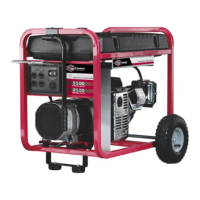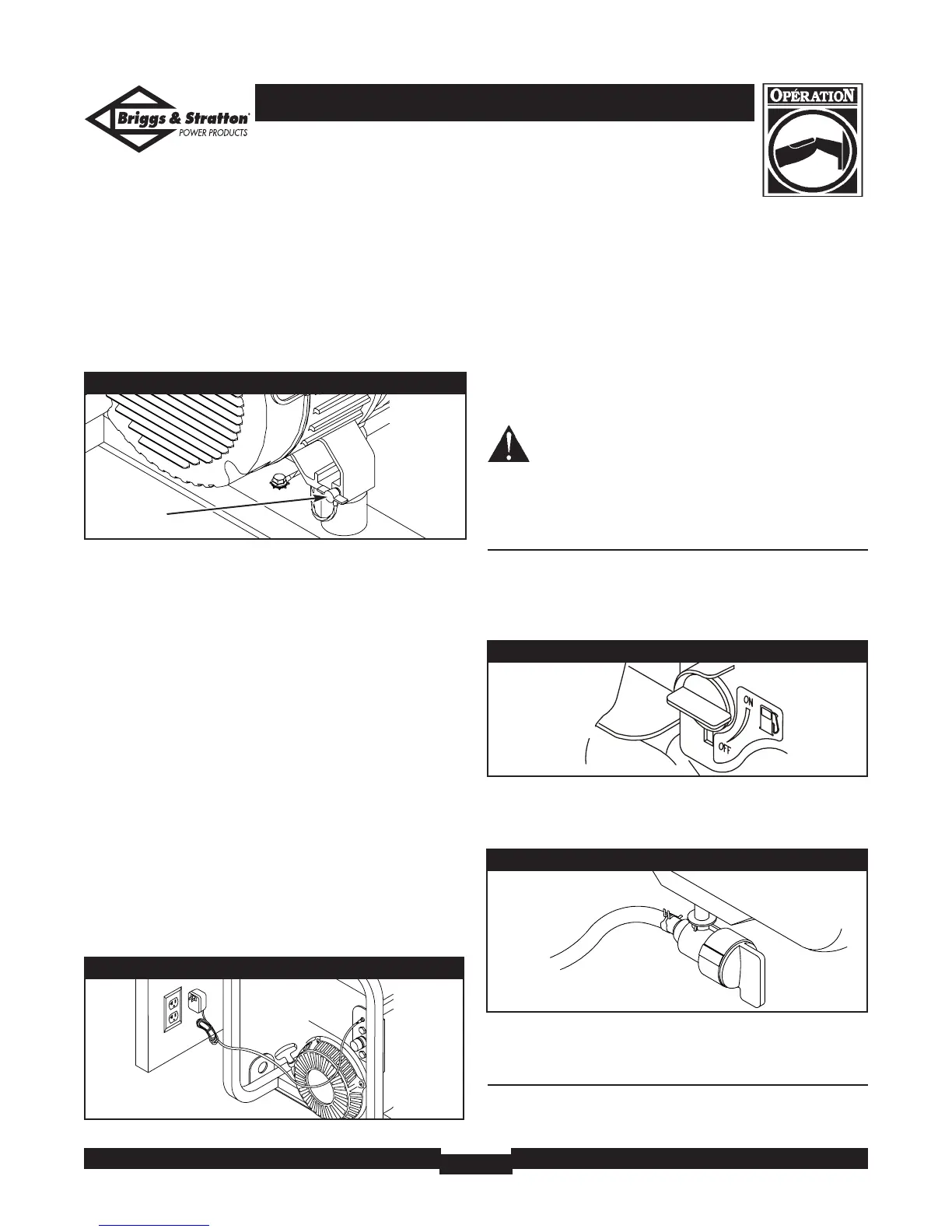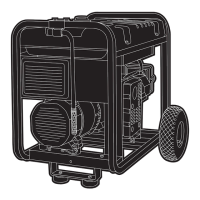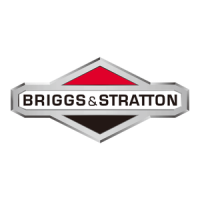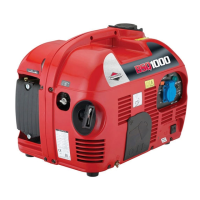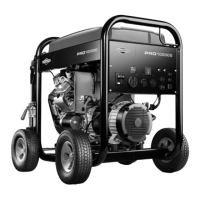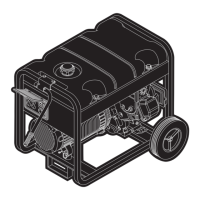Génératrice portative
22
MISE À LA TERRE DU
GÉNÉRATEUR
Le Code national d'électricité exige que le châssis et les pièces
externes conductrices d'électricité de ce générateur soient reliés
correctement à une terre approuvée. Les codes locaux
d'électricité peuvent aussi exiger une mise à la terre appropriée
du générateur. Dans ce but, il y a sur le châssis du berceau une
fermoir (Figure 16) pour cette mise à la terre.
Habituellement, le fait de relier un fil de cuivre tressé No. 12
AWG (American Wire Gauge) à la vis-papillon et à une tige en
cuivre ou en laiton (électrode) de mise à la terre enfoncée dans la
terre fournit une protection adéquate contre les électrocutions.
Cependant, les codes locaux peuvent varier beaucoup. Consultez
un électricien local pour les exigences en matière de mise à la
terre dans votre région. S'assurez de garder le fil de terre attaché
lorsque vous reliez l'électrode.
Une bonne mise à la terre de votre générateur vous aidera à ne
pas vous électrocuter en cas de condition de défaut à la terre
dans le générateur ou dans les appareils électriques qui y seraient
branchés, particulièrement si la génératrice est équipée de roues.
Une bonne mise à la terre peut également aider à la dissipation de
l'électricité statique qui s'amoncelle souvent dans les appareils
sans mise à la terre.
CHARGEUR DE BATTERIE
Utilisez une prise de chargeur de flotteur pour que la batterie de
démarrage reste chargée et prête à l'utilisation. Le chargement de
la batterie doit être effectué dans un endroit sec, à l'intérieur d'un
garage par exemple.
• Branchez le chargeur à la prise “Chargeur de flotteur de la
batterie”, située sur l'interrupteur de démarrage (Figure 17).
Branchez le chargeur de la batterie dans une prise de courant
murale de 120 volts c.a..
• Débranchez le chargeur de l'appareil et de la prise de courant
lorsque vous démarrez le générateur et lorsqu'il est en marche.
• Laissez le chargeur branché lorsque le générateur n'est pas
utilisé; vous prolongerez ainsi la durée de vie de la batterie. Le
chargeur est équipé d'un stabilisateur et ne surchargera pas la
batterie, même lorsque vous le laissez branché pendant une
longue période.
IMPORTANT: Voir la section “Entretien de la batterie” à la
page 26, pour de plus amples renseignements.
UTILISATION DU GÉNÉRATEUR
ATTENTION! NE JAMAIS démarrer ou arrêter le
moteur alors que les appareils électriques sont branchés
dans les prises ET en MARCHE.
IMPORTANT: Débranchez toujours le chargeur de flotteur de la
batterie avant de démarrer le générateur.
Démarrage du Moteur
Déconnectez toutes les charges électriques du générateur. Suivez
ces étapes d'instructions de démarrage:
• Pour les modèles avec la valve d'essence a intégré dans le
moteur, tournez la valve d'essence sur la position “On”
(Marche) (Figure 18).
• Pour les modèles avec un réservoir de carburant d'haut,
tournez la valve d'essence sur la position “On” (Marche)
(Figure 19). La poignée de valve d'essence doit être verticale
(indiquer vers le sol) pour le carburant pour couler.
• Pour démarrer le moteur, suivez les instructions qui figurent
dans le manuel d'utilisation.
Branchement des Charges Électriques
• Laissez le moteur se stabiliser et chauffer pendant quelques
minutes avant de démarrer.
Figure 16 – Vis-Papillon de Terre
Fermoir de
Te r r e
Figure 19 - Valve d'essence
Valve d'essence sur la
position “Marche”
Figure 17 — Prise de Chargeur de Batterie
Valve d'essence
sur la position
“Marche”
Figure 18 — Valve d'essence
